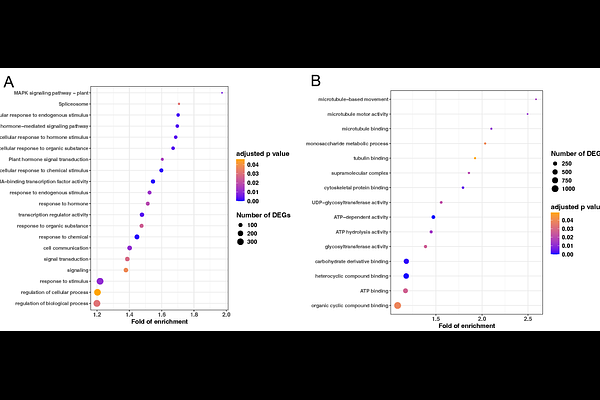Mechanistic dissection of Candidatus Liberibacter Triggered Chronic Immune Disease

Mechanistic dissection of Candidatus Liberibacter Triggered Chronic Immune Disease
Huang, X.; Ma, W.; Wang, W.; Feng, Y.; Lamichhane, T.; Xu, J.; Sheo, P. S.; Achor, D. S.; Li, J.; Wang, Y.; Dalmendray, J. L.; Hu, Z.; Ribeiro, C.; Zhang, N.; Kunta, M.; Hansen, A. K.; Wang, N.
AbstractImmunity is generally considered critical for plant health against pathogen infection. Citrus Huanglongbing (HLB) caused by the phloem colonizing bacterial pathogen Candidatus Liberibacter asiaticus (CLas) was suggested to be a pathogen triggered chronic immune disease. However, the genetic evidence and mechanistic understanding for such a disease model is lacking. Here, we show CLas triggers phloem cell death, reactive oxygen species (ROS) production and callose deposition in photosynthesis tissues, but little or none in non-photosynthesis tissues of citrus. We further demonstrate that CLas triggers ROS production in chloroplasts. Overexpression of flavodoxin (Fld), an electron shuttle, in chloroplasts reduced ROS production, cell death and HLB symptoms, but not phloem callose deposition induced by CLas. Knockout, silencing, and overexpression of phloem callose synthase genes CsCalS7a, CsCalS7b, or CsCalS7c demonstrated that phloem callose deposition also caused phloem cell death. Trunk injection with 2-deoxy-d-glucose, a callose deposition inhibitor, reduced fruit drop and increased fruit yield of HLB symptomatic trees in field trials. Using tomato-Ca. L. psyllaurous (Lpsy) as a model, knockout of Eds1 and Pad4 but not RbohB, Bik1 and Sobir1 abolished ROS production, phloem callose deposition, cell death and disease damages caused by Lpsy. This study provides genetic evidence for Ca. Liberibacter-triggered immune disease and reveals that tuning plant immune responses converts Ca. Liberibacter into a benign endophyte, providing a promising strategy for precision breeding to enhance resistance/tolerance against HLB.